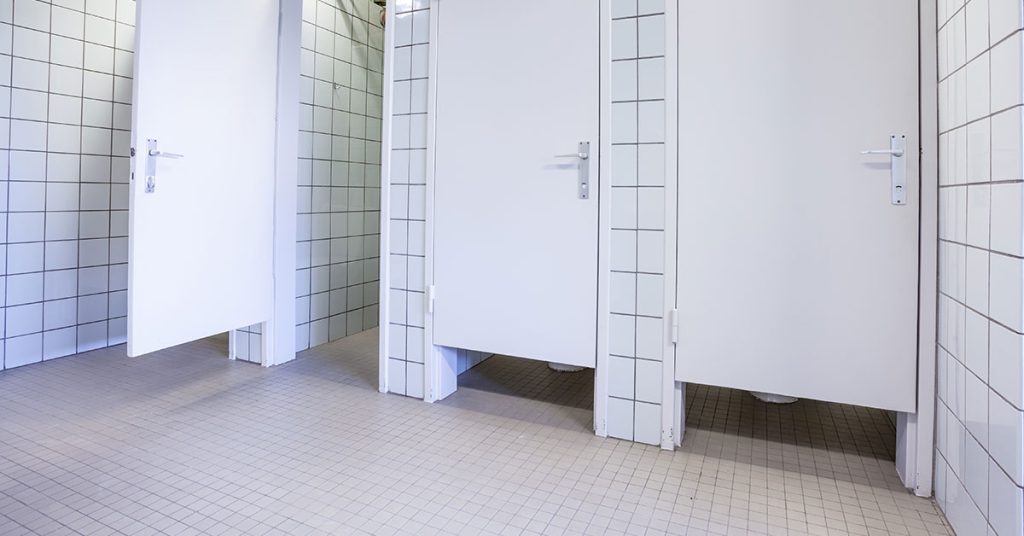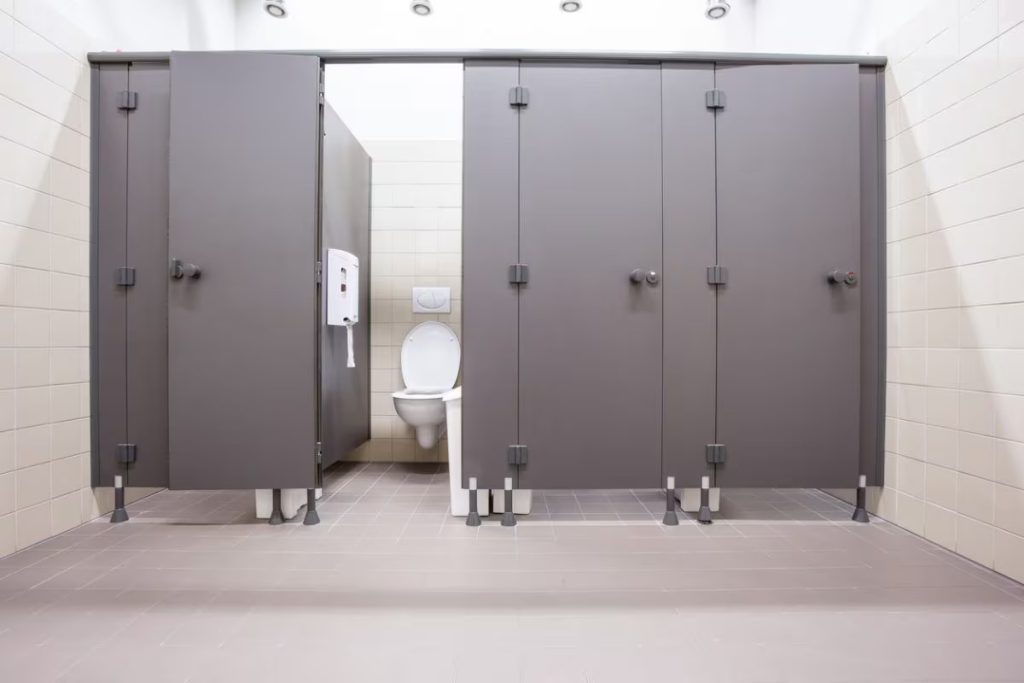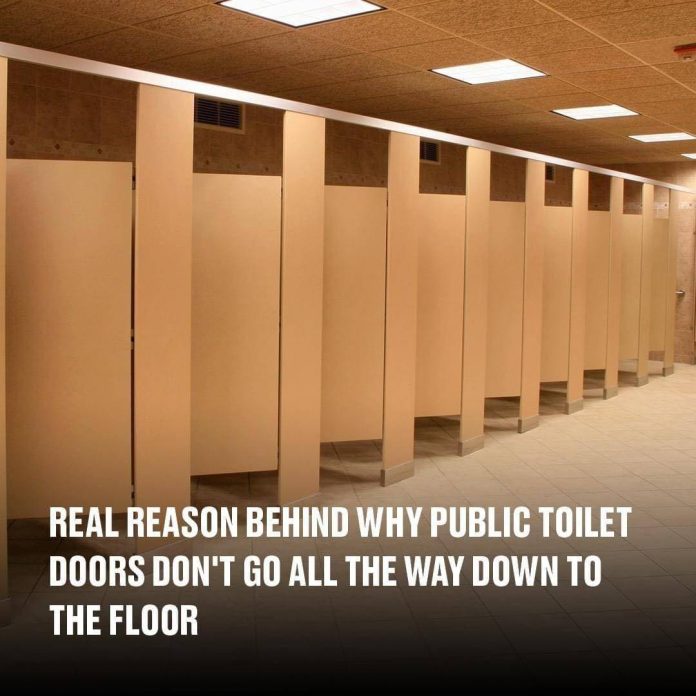Public restroom designs often feature stall doors that do not extend all the way to the floor, a characteristic that has piqued the curiosity of many. This design choice, while seemingly peculiar, serves multiple practical purposes that enhance safety, hygiene, cost-effectiveness, and overall functionality.
1. Emergency Accessibility
One of the primary reasons for elevated stall doors is to facilitate emergency access. In situations where an individual inside a stall requires immediate assistance, the gap at the bottom allows others to quickly assess the situation and intervene if necessary. This design ensures that emergencies can be promptly addressed without the need to breach the door. As highlighted by a TikTok user, “If there’s ever an emergency, it would be pretty easy to see what happened and get the person some help.”

2. Enhanced Cleaning Efficiency
Maintaining cleanliness in public restrooms is paramount. The gap beneath stall doors enables custodial staff to clean the floors more efficiently. Cleaning tools such as mops and pressure washers can easily reach under the doors, ensuring thorough sanitation without the need to open each stall individually. A toilet fitting company notes, “The open floor plan makes it easy for janitors to clean the stalls. A mop or pressure washer can easily fit into the stalls and between the doors on the floor.”
3. Cost-Effectiveness
From a financial perspective, doors that do not reach the floor are less expensive to manufacture and install compared to full-length doors. This cost-saving measure reduces the overall expenses associated with constructing and maintaining public restrooms. As explained by a commentator, “It’s a lot cheaper to buy a door that has part of it cut off than the full door itself.”
4. Improved Air Circulation
Proper ventilation is essential in public restrooms to mitigate unpleasant odors. The gap at the bottom of stall doors promotes better air circulation, allowing foul smells to dissipate more quickly. This design consideration contributes to a more pleasant environment for users. As noted by WC Portables, “The gap between the door and the floor provides a quick escape of the foul smell that was generated by previous users.”
5. Deterrence of Inappropriate Behavior
The reduced privacy resulting from raised doors acts as a deterrent to inappropriate behavior within stalls. The increased visibility and audibility discourage individuals from engaging in misconduct, thereby promoting a safer and more respectful environment. WC Portables adds, “Shorter doors help ensure the toilet queue flows and people refrain from exhibiting poor behavior due to the embarrassment of being spotted.”
6. Facilitation of Quick Exits
In instances where a stall door lock malfunctions, the gap at the bottom allows individuals to crawl out, preventing them from being trapped inside. This design feature ensures that users can exit stalls safely in the event of a lock failure. A user suggests, “If the door gets stuck, you can crawl out.”

7. Occupancy Indicators
The gap also serves as a visual indicator of stall occupancy. Without the need for awkward knocking, individuals can easily determine if a stall is in use by observing the presence of feet or shadows. This small visual check saves time and reduces the embarrassment of attempting to enter an occupied stall. ToiletPartitions explains, “Rather than having to knock on the door to see if a public bathroom is available, a gap at the end of the stall helps to determine if the stall is vacant or not.”
8. Promotion of Faster Turnover
The decreased privacy associated with raised doors often leads individuals to spend less time in the stalls, resulting in faster turnover and reduced wait times for others. When users sense that others can easily hear or see them, they are more likely to conclude their business promptly. WC Portables states, “When individuals sense others can listen to their business that easily, they are prone to wrap up quickly.”
9. Access to Supplies
In situations where a user runs out of toilet paper or requires assistance, the gap allows for easy communication and the passing of items between stalls. This design feature enhances user convenience and ensures that help is readily available when needed. As another user notes, “You can ask someone for toilet paper if you don’t have it.”
In conclusion, the design choice of having public restroom stall doors that do not touch the floor is rooted in practicality. This feature addresses various concerns, including safety, hygiene, cost, and user convenience. Understanding these reasons provides insight into the thoughtful considerations that go into public restroom design, ensuring functionality and comfort for all users.

















